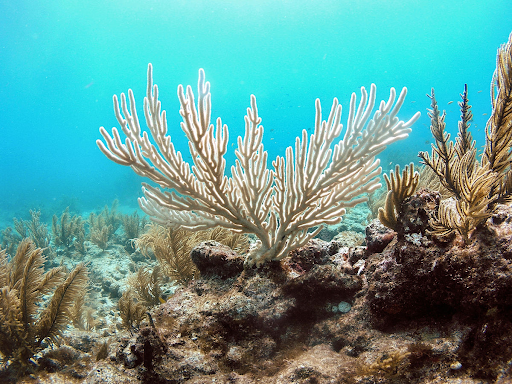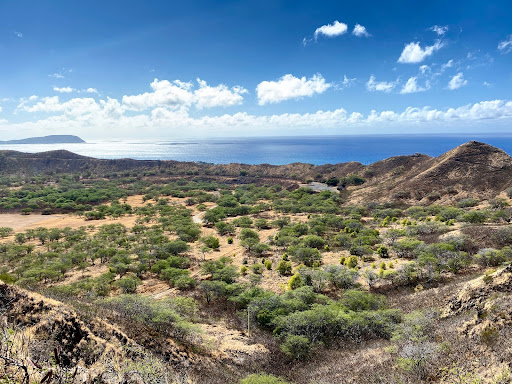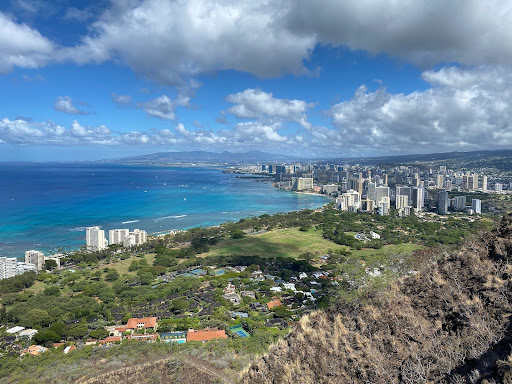Over 100 people dead. 2,000 homes destroyed. Six billion dollars in damages. In August of 2023, wildfires spread throughout Hawaii and ravaged the island of Maui and the town of Lahaina. As Hawaii’s residents grappled with the devastation left by the fires, Maui reopened to tourists only two months after the dust had settled, sparking great controversy amongst locals.
In a time of crisis, some residents begged the rest of the world to stop tourism. Signs reading “Let Lahaina heal” and “Lahaina is not for sale” scattered the highways. On the other hand, state officials urged tourists to return to Maui. In an interview with CBS, Hawaii governor Josh Green said, “You will be helping our people heal. After October 8th, if you could come to Hawaii, that would really help fortify us, because it’s been a very tough time.”
The discussion that resulted from the fires placed tourism in the spotlight. While the fires themselves are not a direct result of tourists, they bring into question the appropriateness of the industry in today’s day and age. One of the biggest criticisms that tourism has faced in recent years is its environmental impact. Whether it’s increased pollution, soil erosion, or habitat loss, tourism’s environmental impact has undoubtedly been harmful to numerous countries.
However, it is important to consider the significance of tourism in certain economies. In Hawaii, for instance, tourism accounts for about 25% of the economy. In March 2023, 900,800 visitors visited Hawaii and spent $1.84 billion. This reliance on tourism is not only seen in Hawaii, but also in countries such as Aruba, the Maldives, and Fiji. In 2021, visitors provided 57% of Aruba’s gross domestic product, 56% of Maldives’, and 40% of Fiji’s.
Besides financial benefits, tourism has also been accredited for encouraging the spread of culture. Hawaii embodies this claim. When I visited Hawaii in 2021, one of the most memorable parts of my trip was the Byodo-In Temple. Nestled in the lush foliage of the Ko’olau Mountains in the Valley of the Temples Memorial Park, the Byodo-In Temple is a replica of a 900-year-old Buddhist temple in the Kyoto Prefecture of Japan. The temple was built as a celebration of the arrival of Japanese immigrants to Hawaii in the 1800s and continues to stand as a symbol of the diverse culture of Hawaii.
Similarly, in Aruba, which receives approximately two million tourists per year, tourism has allowed them to showcase one of the most vital aspects of their cultural identity. Kara Chow ’24, who visited Aruba this past summer, visited an aloe farm. The aloe plant is even featured in the first quadrant of Aruba’s coat of arms, a testament to the plant’s importance to not only Aruba’s economy, but also their culture.

Despite tourism’s efficiency in promoting economic growth and spreading culture, its harmful effects, namely on the environment, remain a large issue.
When planning my visit to Hawaii, I knew there was one activity I couldn’t miss out on: snorkeling. After all, many posts showcasing Hawaii on social media are focused on the island’s pristine beaches, crystal clear waters, and thriving marine life. However, after snorkeling in Hawaii and reading about it in the news, I realized that the clear waters in tropical hot spots are not as clean as portrayed on social media.
The snorkeling bay that I visited, Shark’s Cove, was relatively lively and home to various marine species, including sea urchins, parrotfishes, butterflyfishes, and a couple other types of tropical fish, but did not nearly meet my expectations of a beach with vibrant marine life.
Unsurprisingly, this is a direct result of tourism. A 2022 Senate bill regarding marine life at Pupukea, the conservation district that comprises Sharks Cove, Waimea Bay, Kapoho tide pools, and Three Tables addresses this problem. The bill highlights the damage that the number of daily visitors to the area is inflicting on the health and abundance of marine life in these protected beaches.
When the COVID-19 pandemic put a halt on tourism to Hawaii, marine conservation groups conducted research on humans’ environmental impact on the Pupukea district. Jenny Yagodich, Malama Pupukea Waimea’s director of educational programs, said, “We were amazed at how fast, in fact in just one moon cycle, the marine life started to bounce back here at Sharks Cove. The biggest important thing that we see out here is surface area under water, so most things in the ocean recoup based on being able to settle.”
A similar trend was observed in Thailand’s Maya Bay. Prior to its closure in 2018, Maya Bay, on the island of Phi Phi Leh, received up to 5,000 visitors every day. These numbers had disastrous impacts on the bay’s ecosystem, as visitors often left plastic waste behind and tourist boats leaked oil, disturbing marine life. In just one decade, the total area experiencing coral reef damage in Thailand had increased from 30 percent to 77 percent.
In 2019, authorities decided that Maya Bay would benefit from an additional two years of closure, which would allow marine life to heal. Up to sixty blacktip reef sharks started visiting the bay every day, and the coral started to recover.
Unfortunately in other countries, coral reef damage still remains a large problem. “I went to a reef near the hotel that I stayed at. There were hundreds and hundreds of fish there, but basically no coral,” said Chow.
Despite being an appealing vacation activity, excessive snorkeling causes immense damage to coral reefs. The chemicals in sunscreen, such as oxybenzone and octinoxate, have been proven to contribute to coral bleaching. According to National Geographic, 14,000 tons of sunscreen are thought to wash into the oceans each year and 82,000 chemicals from personal-care products may be polluting the seas.

Coral bleaching, an effect of excess snorkeling, ruins the physical appeal of coral reefs, creating a cycle where tourism ruins the ecosystem and as the ecosystem deteriorates, tourism levels fall, a cycle that only hurts the environment.
Another harmful impact on tourism is that it contributes to overcrowding at natural attractions. Volcanoes are a prominent part of Hawaii’s history, as the islands themselves were formed through volcanic activity. One of Hawaii’s most popular landmarks, Diamond Head State Monument, is a volcanic tuff cone located on the island of Oahu. Formed around 300,000 years ago, Diamond Head is a member of the Honolulu Volcanic Series, along with other prominent volcanoes in Hawaii such as Koko Head, Punchbowl Crater, and Mount Tantalus. The trail to the summit of Diamond Head Crater, 1.3 km and 171 m in elevation, was built in 1908 as part of Oahu’s coastal defense system.

(Grace Mao)
In May of 2021, Diamond Head had 70,029 visitors, nearly 20,000 more visitors than the 51,327 visitors in May of 2019. “[It’s] a little bit frustrating because we have structures that are falling apart. My job is to protect the park and people’s safety,” said Cassandra Springer, Diamond Head State Park coordinator.
The effects of overcrowding can be seen in national parks across the United States, where it has contributed to erosion or the creation of visitor-made trails, which can be destructive to the existing ecosystem and wildlife within the parks. In 2022, U.S. National Parks recorded over 300 million visits, which unfortunately also came with more prevalent cases of visitors disturbing wildlife and trespassing on fragile lands.

Aiming to alleviate some of the environmental impacts of overtourism, authorities introduced reservation systems at Hanauma Bay, one of the marine conservation districts in Oahu, in April 2021, and in Diamond Head State Monument in May 2022. Similarly, in National Parks such as Yosemite and Rocky Mountain, visiting capacities have been reduced in order to combat the detrimental effects of tourism. Will these systems be enough to counteract the effects of thousands of tourists? All we can do is wait and see.
As ecosystems are on the brink of collapse, it is more important than ever for tourists to be mindful of our environmental impact.
Despite tourism’s efficiency in promoting economic growth and spreading culture, its harmful effects, namely on the environment, remains a large issue.

